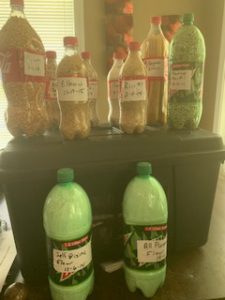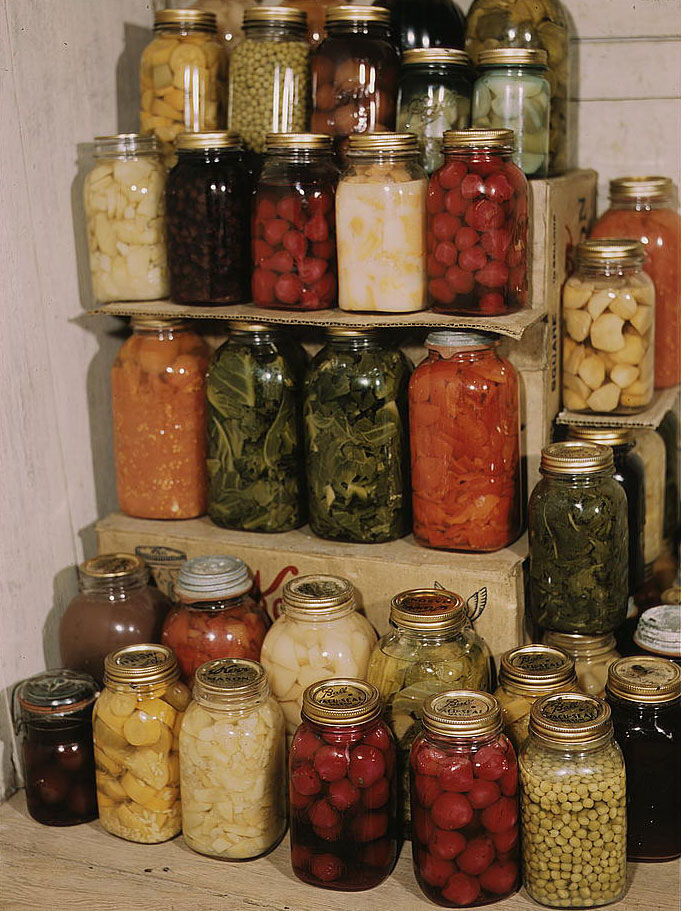
Food in a survival situation is as important as water. Although you can survive longer without food than you can without water, why would you if there is an easy way to ensure you have the food you will need. Keeping food fresh for the long term can be difficult, and the prepackaged long term food can be expensive, but there is a way to do this with a small time commitment.
The most important thing to determine first is how long you will need to rely on your food stores, and how much you will need for the whole family. I myself have not determined the time I would need to rely on my stores, but I continue to stock what I can when I can, and you can do this as well if you decide to. Ultimately it is your decision on what is best for your family.
The Cheaper Way to Store Food
While doing research for food storage, I found that the prepackaged meals can cost a lot of money at one time, and I could not afford to go this route. I found that there is a way to use certain items to store dry goods in, that would keep them fresh for the long term. I did research on this method to ensure that I would not be wasting my time and money because I want to ensure my survival, but could not lose money on the process as I did not have much to invest.
I can assure you that this method is easy, and you can build your stores on a budget that you decide on, and the food will last for several years.
I just did another inventory of my stores, and there is some food from 2013 that I have and there are no impurities within any of the foods.
.
The Best Foods to Use
The foods that work best for this method is dry goods like beans and rice. I have also packaged different dry pastas, and flour with this and been successful so far in how they have lasted. Fair warning that any foods that have some moisture within them will not work. Pancake mix will not last with this method, but things like salt, sugar, and baking soda will. I have given you a look into what foods I have in my stores, and I love popcorn, so I have some of that as well.
I still think about the foods that I could store with this method, and you should as well. You never know what you might discover that you can keep long term, so never stop thinking.
What You Need
The items you will need are simple to gather. I use plastic soda bottles as the storage containers, Teflon or plumber tape for creating an air tight seal, and white duct tape to label the container with the contents and date of packaging.
Boxes to keep the bottled food in will be necessary as you build your stores, but ensure the box can be carried if moving the food becomes necessary for survival.
Index cards are great to put the cooking instructions on for the different foods, and I have all of mine in a little box that I can grab with my food if I need to.
It took me a while to gather the amount of bottles I would need, and I used all sizes, but asking family and friends to save their plastic soda bottles for you will help get a fast start on your stores. I do not recommend using any other type of plastic bottles as the plastic could be different, and these bottles will hold up well for the long term.
Plastic water bottles will not work as they are made with a thinner plastic. You can use glass for this purpose, but glass breaks easily where the bottles will not, so I do not recommend them.
The Process
The process is simple but can be time-consuming. The first thing you want to do is clean the bottles well and then let them dry completely before using them. I cleaned my bottles with hot water three times to make sure I got them clean enough. This worked great. Once you have the clean dry bottles, you can then proceed putting the food into the bottle. For some foods this will be easy, for others this will be time-consuming. Flour is the most difficult and there is not a good method that I found except patience.
Once you have the food in the bottle, the sealing process is next. This is where the plumber tape will be used. The tape needs to be wrapped around the threads of the bottle where the cap goes, and doing this several times will ensure a tight seal for the bottle. Label the bottle with the food and packaging date, and you are ready for the final step.
This last step is the easiest of the process, and just requires some freezer space. To kill any bugs and create the air tight seal, each bottle will need to spend at least three days in the freezer, one day out, and then three more in the freezer. This does not have to be exact as long as each bottle gets a minimum of three days in the freezer twice.
I will admit that there were times I would forget where my bottles were in the process, and some, I am sure got more than two turns in the freezer, as well as some spending more than three days in there. The important thing is the cycle of three one three. A minimum of three days in the freezer with one day out and a minimum of three more days in. If the time is more than three one three, it will be fine. What matters is that each bottle gets the minimum time to kill what might be in the foods. This is especially important for flour storage long term.
The plumber tape is something that I did not find in my research for this method, but something I thought would help with the sealing of the cap better. I also found that using bay leaves in beans will work instead of the freezer method, and the size of the bottle determines how many leaves I use. I will put them in the bottom, middle and top, but this is an extra cost to the process.
Conclusion
This is an easy, cost-efficient way to slowly build your food storage as your budget allows. Yes there are prepackaged plans available on the market, but if you do not have expendable cash on hand, they can be difficult to justify. This method allows you to plan and build long term storage, and is a great place to start. You can always purchase the packages when you are able to save the money for them, but you can always start with this method to get your stores going.
One thing that I do struggle with, is knowing what I have and what dates they are. I am in the process of developing an inventory spread sheet for what I have, and I recommend you find a way to track what you purchase and store as well. Find what works best for you and stick with it.
Good luck in building your food stores for emergencies.
